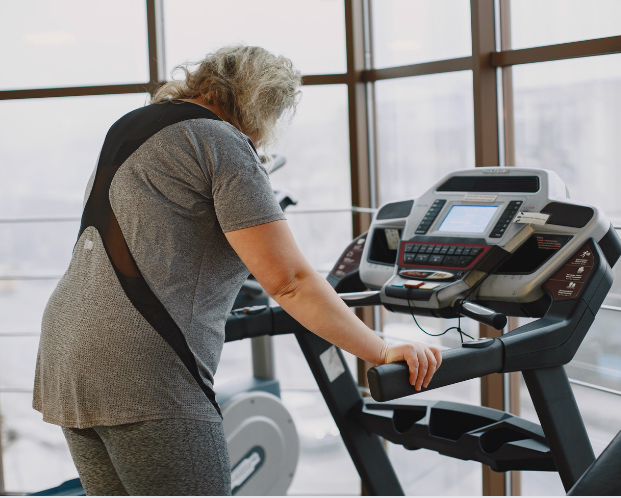How to Increase Your Running Speed in 2 Weeks
How to Increase Running Speed in 2 Weeks:
Proven Tips and Techniques:
If you’re looking to increase your running speed in just two weeks, you’ve come to the right place. Whether you’re a beginner or an experienced runner, there are several techniques you can use to improve your speed and stamina. With a little bit of commitment and hard work, you can see significant improvements in just a short amount of time. Follow the help in this article to easily learn How to Increase Running Speed in 2 Weeks.
Before we dive into the tips and techniques, it’s important to understand what running speed and stamina mean. Running speed refers to how fast you can run, while stamina refers to how long you can run without getting tired. Both are important factors in improving your running performance. By focusing on both speed and stamina, you can become a more efficient runner and see improvements in your overall performance.
Key Takeaways
- How to Increase Running Speed in 2 Weeks takes commitment and hard work.
- A combination of running and strength training can help you see significant improvements in just two weeks.
- Beginner runners should focus on proper form and building endurance, while advanced runners can incorporate more intense techniques like interval training and hill repeats.
Understanding Running Speed and Stamina
 Running is a great way to improve your fitness and overall health, but it can be challenging to increase your running speed and stamina. Running speed refers to how fast you can run, while running stamina refers to how long you can maintain your running speed. Improving both of these aspects of your running can help you become a better runner and reach your fitness goals.
Running is a great way to improve your fitness and overall health, but it can be challenging to increase your running speed and stamina. Running speed refers to how fast you can run, while running stamina refers to how long you can maintain your running speed. Improving both of these aspects of your running can help you become a better runner and reach your fitness goals.
To increase your running speed and stamina, it’s important to understand the factors that contribute to your performance. Some of the key factors that affect your running speed and stamina include:
- Cardiovascular fitness: This refers to the ability of your heart and lungs to deliver oxygen to your muscles during exercise. Improving your cardiovascular fitness can help you run faster and longer.
- Muscle strength: Strong muscles can help you maintain your running form and speed, especially during longer runs. Focus on building strength in your legs, core, and upper body.
- Running form: Proper running form can help you run more efficiently and reduce your risk of injury. Make sure you’re using good running form, including landing on the middle of your foot and keeping your arms and shoulders relaxed.
- Training intensity: Increasing the intensity of your training can help you improve your running speed and stamina. This can include incorporating interval training, hill training, and tempo runs into your routine.
- Nutrition and hydration: Proper nutrition and hydration are essential for optimal running performance. Make sure you’re fueling your body with the right foods and fluids before, during, and after your runs.
By focusing on these factors and incorporating them into your training routine, you can improve your running speed and stamina in just two weeks. Keep in mind that progress may be gradual, and it’s important to listen to your body and avoid overtraining. With dedication and consistency, you can become a better runner and achieve your fitness goals.
Commitment to Running and Strength Training
If you want to increase your running speed in just two weeks, you need to be committed to both running and strength training. Here are some tips on how to do it.
Benefits of Strength Training for Runners
Strength training is essential for runners because it helps build muscle, increases endurance, and reduces the risk of injury. When you add strength training to your running routine, you’ll notice significant improvements in your performance.
Here are some of the benefits of strength training for runners:
- Improved running economy: Strength training helps improve your running economy, which means you’ll be able to run faster and longer without getting tired.
- Increased muscle mass: Strength training helps build muscle mass, which helps you run faster and with more power.
- Reduced risk of injury: Strength training helps strengthen your muscles, tendons, and ligaments, which reduces the risk of injury.
- Better posture and form: Strength training helps improve your posture and form, which can help you run more efficiently.
Focus On Your Lower Body: How to Increase Running Speed in 2 Weeks
 To get the most out of your strength training, focus on exercises that target your lower body, such as squats, lunges, and calf raises. You should also include exercises that target your core, such as planks and sit-ups.
To get the most out of your strength training, focus on exercises that target your lower body, such as squats, lunges, and calf raises. You should also include exercises that target your core, such as planks and sit-ups.
Commit to running and strength training at least three times a week for the next two weeks, and you’ll notice significant improvements in your running speed. Remember to take rest days to allow your body to recover and avoid overtraining.
In summary, adding strength training to your running routine can help you run faster, longer, and with less risk of injury. Commit to running and strength training, and you’ll be well on your way to achieving your running goals.
Running Speed Tips for Beginners
If you are new to running, you need to be careful when increasing your running volume. Here are some tips to help you increase your running speed in 2 weeks:
Increasing Running Volume
Slowly increase your weekly mileage to avoid injury. A good rule of thumb is to increase your mileage by no more than 10% each week. For example, if you ran 10 miles this week, you should aim to run no more than 11 miles next week. This gradual increase will allow your body to adapt to the new demands of running.
Another way to increase your running volume is to add an extra day of running to your weekly schedule. If you currently run three days a week, try adding a fourth day. This will help you build endurance and increase your running speed.
Using Heart Rate Data
Using heart rate data can also help you improve toward your target of Increasing Your Running Speed in 2 Weeks. Your heart rate is a good indicator of how hard you are working during your runs. By monitoring your heart rate, you can make sure you are running at the right intensity to improve your fitness and increase your running speed.
To use heart rate data, you will need a heart rate monitor. Wear the monitor during your runs and record your heart rate data. You can then use this data to make sure you are running at the right intensity.
Always Keep an Eye On Your Heart Rate
 In general, you should aim to run at a heart rate that is between 60% and 80% of your maximum heart rate. Your maximum heart rate can be estimated by subtracting your age from 220. For example, if you are 30 years old, your estimated maximum heart rate is 190 beats per minute (220 – 30 = 190).
In general, you should aim to run at a heart rate that is between 60% and 80% of your maximum heart rate. Your maximum heart rate can be estimated by subtracting your age from 220. For example, if you are 30 years old, your estimated maximum heart rate is 190 beats per minute (220 – 30 = 190).
By following these tips, you can increase your running speed in 2 weeks. Remember to be patient and listen to your body. Running is a great way to improve your fitness and overall health, but it’s important to take it slow and steady when starting out.
Advanced Techniques for Speed Runners
If you’re already a seasoned runner and want to take your speed to the next level, here are some advanced techniques to try out.
Sprint Interval Training
Sprint interval training (SIT) is a form of high-intensity interval training (HIIT) that involves short bursts of all-out effort followed by periods of rest or low-intensity activity. SIT has been shown to improve both speed and endurance in runners.
To incorporate SIT into your training, try adding 30-second sprints into your regular runs. Start with just a few sprints per run and gradually increase the number over time. You can also try doing a separate SIT workout, where you alternate between sprints and rest periods for a set amount of time.
Training for Your Distance
While SIT can be effective for improving speed, it’s important to also train specifically for the distance you’re aiming to run. For example, if you’re training for a 5K, you’ll want to focus on building speed and endurance for that distance specifically.
One way to do this is to incorporate tempo runs into your training. Tempo runs involve running at a sustained, challenging pace for a set amount of time. For a 5K, you might aim to run at a pace that’s about 25-30 seconds slower than your race pace.
Pay attention to your Rest Times and Intervals
Another important aspect of distance-specific training is to pay attention to your rest times and intervals. Rest times should be long enough to allow for recovery, but not so long that you lose the benefits of the workout. Similarly, intervals should be tailored to the distance you’re training for. For example, if you’re training for a 10K, you might do longer intervals with shorter rest periods, whereas if you’re training for a mile, you might do shorter intervals with longer rest periods.
By incorporating SIT and distance-specific training into your routine, you can take your running speed to the next level. However, it’s important to remember that these techniques should be approached with caution and gradually incorporated into your routine to avoid injury.
Maximizing Treadmill Workouts
 If you’re looking to increase your running speed in just two weeks, the treadmill can be a great tool to help you achieve your goal. Here are some tips for maximizing your treadmill workouts:
If you’re looking to increase your running speed in just two weeks, the treadmill can be a great tool to help you achieve your goal. Here are some tips for maximizing your treadmill workouts:
Running on an Incline
When using a treadmill, it’s important to make sure you’re running on a slight incline. This will help simulate outdoor running conditions and engage your glutes, hamstrings, and calves more effectively. Running on a flat surface can make your workout feel easier, but it won’t provide the same benefits as running on an incline.
To find the right incline, start by setting the treadmill to a 1-2% grade. This will mimic the natural resistance of outdoor running and help you build strength in your lower body. As you get more comfortable, you can increase the incline to 3-4% or higher.
Keep in mind that running on an incline can be more challenging on your joints, so it’s important to listen to your body and adjust the incline as needed.
Other Tips for Maximizing Your Treadmill Workouts
In addition to running on an incline, there are other ways to get the most out of your treadmill workouts. Here are a few tips:
- Use interval training: Alternating between periods of high intensity and low intensity can help you burn more calories and improve your overall fitness.
- Mix up your workouts: Don’t do the same workout every time you hit the treadmill. Mix up your speed, incline, and duration to keep your body challenged.
- Stay hydrated: Make sure to drink plenty of water before, during, and after your workout to stay hydrated.
- Use proper form: Keep your head up, shoulders relaxed, and arms at your sides when running on the treadmill. Avoid leaning forward or holding onto the handrails, as this can put unnecessary strain on your back and shoulders.
By following these tips and incorporating them into your treadmill workouts, you can increase your running speed and improve your overall fitness in just two weeks.
Conclusion: How to Increase Running Speed in 2 Weeks
With the right training plan, you can increase your running speed in just two weeks. By incorporating a combination of strength training, interval training, and proper nutrition, you can improve your running form and endurance, allowing you to run faster and more efficiently.
During the two-week period, it’s important to stay consistent with your training and to listen to your body. Don’t push yourself too hard, too fast, as this can lead to injury and setbacks in your progress.
Proper Hydration and Nutrition – Essential!
 Remember to incorporate rest days into your training plan, as this allows your body to recover and repair itself. Proper hydration and nutrition are also essential for optimal performance, so make sure you’re fueling your body with the nutrients it needs to succeed.
Remember to incorporate rest days into your training plan, as this allows your body to recover and repair itself. Proper hydration and nutrition are also essential for optimal performance, so make sure you’re fueling your body with the nutrients it needs to succeed.
By following these tips and staying committed to your training plan, you’ll be well on your way to increasing your running speed in just two weeks. Good luck on your journey to becoming a faster, stronger runner!
Frequently Asked Questions
How can I increase my running speed in 14 days?
To increase your running speed in 14 days, you need to focus on improving your running form, increasing your endurance, and incorporating speed workouts into your routine. Start by running on your toes, keeping your arms at a 90-degree angle, and engaging your core. Gradually increase your distance and pace each day. Incorporate speed workouts such as intervals, tempo runs, and fartleks to build your speed and endurance.
What are some exercises to improve running speed?
There are several exercises you can do to improve your running speed. Plyometric exercises such as jump squats, lunges, and box jumps can help improve your explosive power and speed. Resistance training exercises such as squats, deadlifts, and lunges can help build your leg muscles, which can improve your running speed. Additionally, incorporating hill workouts and sprints into your routine can help improve your speed and endurance.
How to improve running stamina in 2 weeks?
 To improve your running stamina in 2 weeks, you need to focus on building your endurance. Start by running at a comfortable pace for a longer distance each day. Gradually increase your distance and pace each day. Incorporate interval training and hill workouts to build your endurance and improve your overall running stamina.
To improve your running stamina in 2 weeks, you need to focus on building your endurance. Start by running at a comfortable pace for a longer distance each day. Gradually increase your distance and pace each day. Incorporate interval training and hill workouts to build your endurance and improve your overall running stamina.
More Tips on How to Increase Running Speed in 2 Weeks
To run faster and longer, you need to focus on improving your running form, building your endurance, and incorporating speed workouts into your routine. Start by running on your toes, keeping your arms at a 90-degree angle, and engaging your core. Gradually increase your distance and pace each day. Incorporate speed workouts such as intervals, tempo runs, and fartlek to build your speed and endurance.
How to improve running speed as a beginner in 2 weeks?
 To improve your running as a beginner in 2 weeks, you need to focus on building your endurance and incorporating speed workouts into your routine. Start by running at a comfortable pace for a shorter distance each day. Gradually increase your distance and pace each day. Incorporate interval training and hill workouts to build your endurance and improve your overall running stamina.
To improve your running as a beginner in 2 weeks, you need to focus on building your endurance and incorporating speed workouts into your routine. Start by running at a comfortable pace for a shorter distance each day. Gradually increase your distance and pace each day. Incorporate interval training and hill workouts to build your endurance and improve your overall running stamina.
How to increase speed for running 100m in 2 weeks?
To increase your speed for running 100m in 2 weeks, you need to focus on improving your explosive power and speed. Incorporate plyometric exercises such as jump squats, lunges, and box jumps into your routine to improve your explosive power. Additionally, incorporate sprint workouts and hill workouts to build your speed and endurance.

